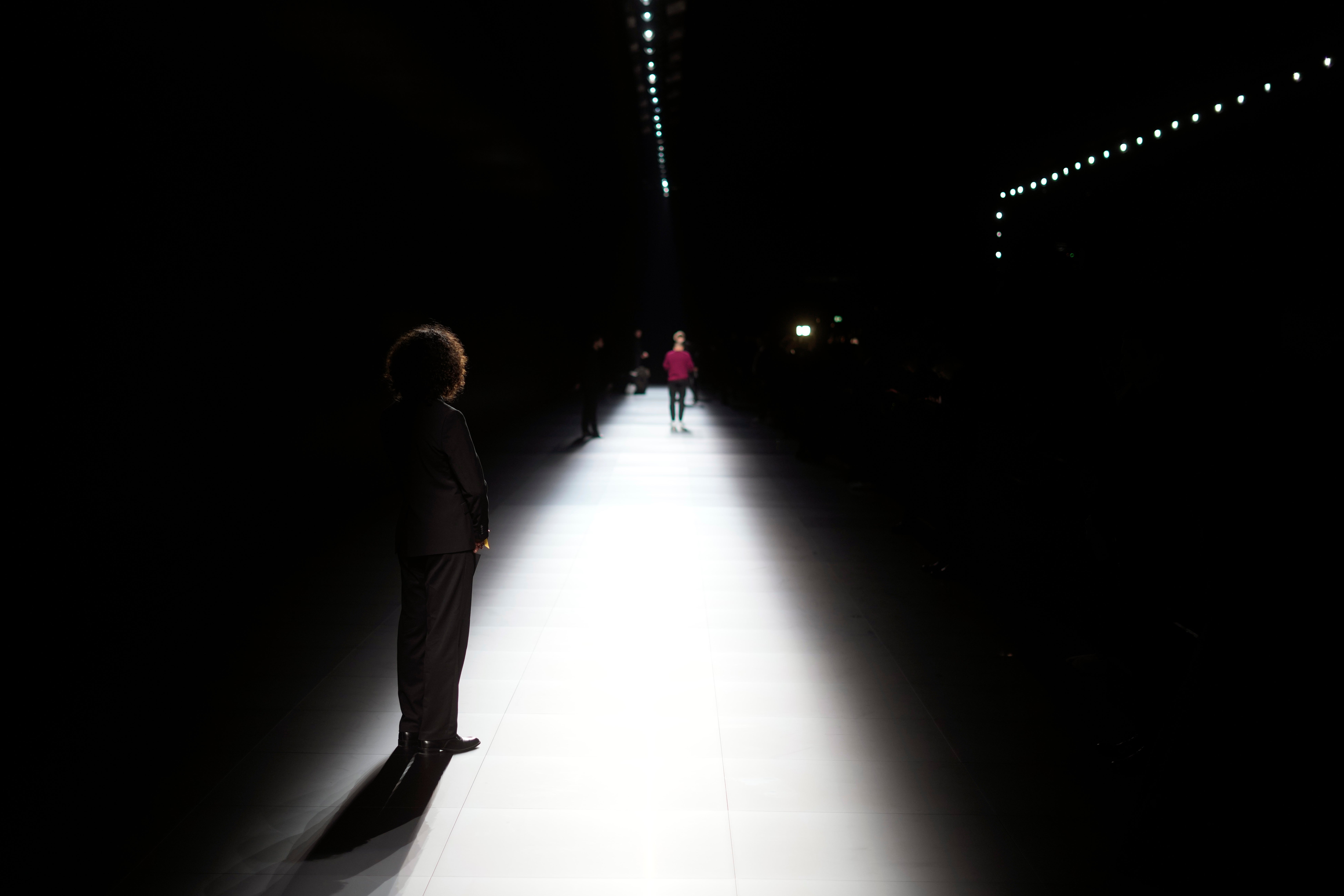Loewe's minimalist Paris show explores Old Masters, boyhood
Designs by Loewe’s Northern Irish designer Jonathan Anderson are often credited by front-row editors as among the best if not the best gracing the Paris runways today

Jonathan Anderson, it seems, can do no wrong. Loewe’s Northern Irish designer’s imaginative and boundary-pushing designs are often credited by front-row editors as among the best, if not the best, gracing the Paris runways today.
And Saturday’s fall collection, with its broken shards of plaster littering the set’s edges, only confirms this. It sent the Spanish heritage house — and its VIP guests — into an off-kilter, stripped away world of Old Masters, boyhood, vulnerability and dreams.
Here are some highlights of the fall-winter 2023-24 displays:
LOEWE’S SENSITIVE GENIUS
A baffling painting of a schoolboy — half-naked in underwear, tie strung around his neck, reclining in a classical pose — dominated the central portion of the runway theater in-the-round.
What followed made the art’s meaning more apparent — golden angel wings, oversize sunken medieval boots, silken historic tops unbuttoning at the back, in the colors of parchment, velvet, copper and steel.
Anderson had delved into the world of the Old Masters, recreating the vulnerability of the masterpiece oil paintings in a contemporary way — with sensitivity, flair, and restrained visual drama.
Looks were intentionally incomplete — bare torsos on shimmering loose gold shorts, pale legging undergarments with a sort of codpiece, big leather boots with no pants. This broken, raw, incompleteness on the young male models — much like the shards of plaster crunching under guests’ feet — gave the collection an emotional depth, evoking a sense of vulnerability and innocence.
Anderson infused the 48 looks with a surrealism, kept in check by his unwavering minimalist aesthetic and clean color blocking.
A silk lavender top, glistening regally, sported elements of draping, while its long-layered sleeves evoked the style of historic dress.
The pieces de resistance? Two exaggeratedly thick coats in cork and cerulean with an Elizabethan feel that were tucked at the hem like a parachute and worn over a naked body.
KENZO’S PARTY
A 1,000-seat music hall with string quartet ensemble, an afterparty where the drinks flowed like Ancient Rome and celebrity musical performances that warbled well into Friday night.
This was Kenzo in a confident mood — signaling it felt the new designer was growing in his own spotlight.
It is one year since Nigo now made history as the first Japanese designer to be appointed at the house since Kenzo Takada, who died in 2020.
And this fall collection did see him hone his craft — slightly — shifting out of the house founder’s shadow.
The music scene was the heart of a display with styles centered on London’s underground subcultures in the 1960s and '70s such as punk and the mods. It was a sort of counterappropriation of the West through a Japanese prism. (The string quartet was comprised of female Japanese performers dressed as the Beatles in pale suits.)
Nigo disrupted this wardrobe with Japanese traditional dress.
A take on British tailoring, a loose beige jacket, was envisioned with a crossover kimono style. Sartorial pants whose material might have looks fit for the City of London became a take on the traditional baggy hakama pants.
The preppy styles — ones that jarred in Nigo’s last two shows — were more thought out, like one boy scout scarf in multicolor knit, although it still felt a tad obvious.
Eye-popping color that gave a lift to American workwear and utilitarian detailing were a nice counterpoint.